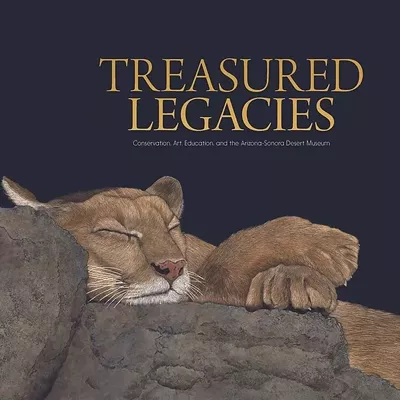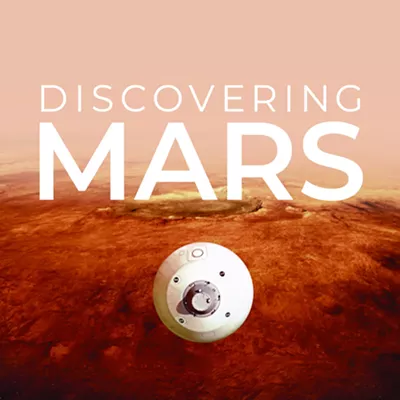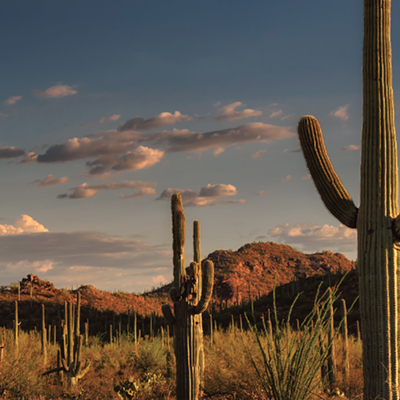I walked past the Occupy Tucson camp the other day and stopped for while to watch a hacky-sack game. I read a few of the cardboard slogans, talked to a guy with booze on his breath, and left wishing that I could buy the group a few copies of Andrew Ross' new book to pass around.
Invited to train his sharp, critical eye on the Sonoran Desert's megalopolis by Arizona State University's Future Arts Research program, Ross, a professor of social and cultural analysis at New York University, interviewed some 200 Phoenicians during his stay, including urban gardeners, environmental-justice activists, academics working on the sharp edge of green technology and theory, and a few of the Arizona Legislature's global-warming deniers.
The resulting book, Bird on Fire: Lessons From the World's Least Sustainable City, is terrifying, maddening, depressing and hopeful all at once. Kind of like Phoenix itself.
Now, longtime Arizonans must approach Ross with an open mind. It's not easy to read some New Yorker's rather biting criticisms of the place where your ancestors tried their very best to make a go of it in a harsh and uninviting land. This was Grady Gammage Jr.'s problem in a superficial column he wrote earlier this month for The Arizona Republic; he spent several column inches complaining about the book's controversial subtitle before plugging his own study that shows things aren't really as bad in Arizona as some people say. But Gammage, whom Ross interviews in the book, is merely continuing the tradition of sunny, chamber of commerce-style boosterism that helped create a growth model that has made Phoenix and the other cities in the Valley some of the hardest-hit casualties of the Great Recession.
Unconcerned with enticing retirees and rust-belters to rev the growth machine again, Ross is able to go quite a bit deeper. He covers ground that is mostly rehashed—albeit very well written and impeccably reasoned—to readers familiar with the history of the Valley's settlement and the more-recent, scattershot efforts of its citizens to make the city, and the state as a whole, more sustainable. But his take on the environmental, demographic and political anxieties that may be behind the otherwise straight-up racist anti-immigrant fervor of Gov. Jan Brewer and the Legislature is nothing short of revelatory.
The executive and legislative branches of our state's government have long been in bed with the Federation for American Immigration Reform, a nativist, white-supremacist group that was green-washed long ago to attract the environmentally concerned to the anti-immigration cause; one of its more high-profile strategies is to decry trash left behind by migrants.
As Ross sees it, the migrants so hated by FAIR and its puppets in Arizona government are climate refugees—victims of NAFTA, yes, but also of Phoenix's poisonous footprint, which is much larger than most are willing to admit.
"Arizona's harsh anti-immigration laws and Maricopa County's brutal policing are spurred by the anxiety of Anglos about losing demographic and political dominance," he writes. "But these inhospitable responses are also shaped by stoked-up fears about population pressure on scarce resources. With the volume of environmental refugees on the rise, it can be concluded that migration to Central Arizona, is, in part, already a side effect of the region's hydrocarbon emissions, and that border-crossers should have a legitimate claim on sanctuary as a result. Yet nativists seem hell-bent on turning the state into a kind of exclusion zone that is distinctive of resource hoarding."
Try telling that one to Sheriff Joe.
As it is with most books about our likely resource-scarce future, Bird on Fire can get a bit depressing. On the whole, though, I came away from it rather hopeful for Phoenix and Arizona. Ross was able to find a legion of activists and energetic, thoughtful citizens who, rather than sitting around a public park in a tent and holding up a sign scrawled with a platitude, are dedicating their sweat and treasure to transforming their city. Another sign of hope for the Valley—which will include Tucson someday if the long-projected Sun Corridor becomes a reality—is ASU. The state's largest university has over the last decade made itself a national leader in sustainability research, with the entire sprawling desert city as its laboratory.
On the political side of things, however, the hope is less obvious; as Ross points out, the hypocrisy, propaganda and willful ignorance of the all-powerful right wing in Arizona is the single greatest obstacle to true sustainability.







